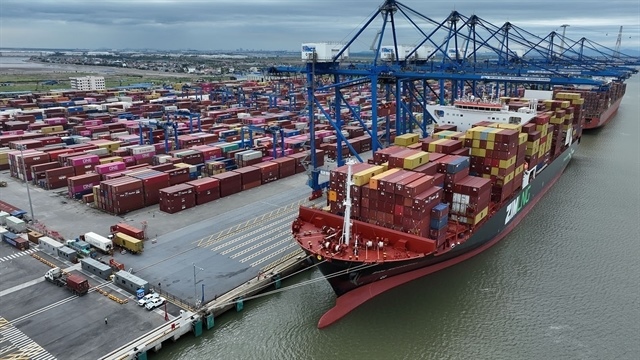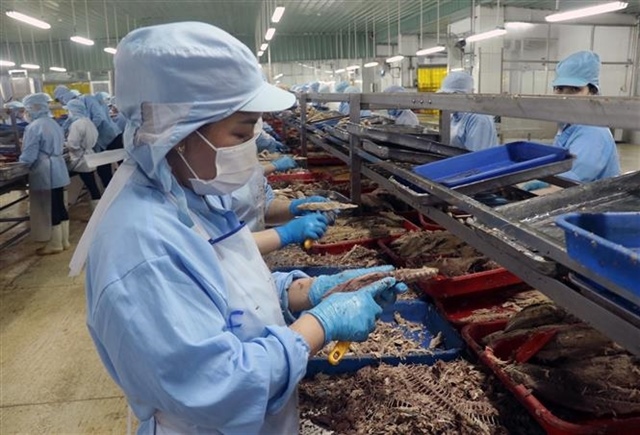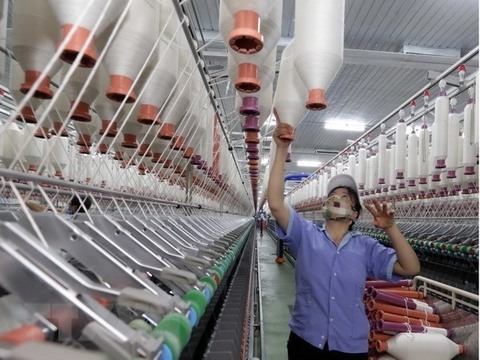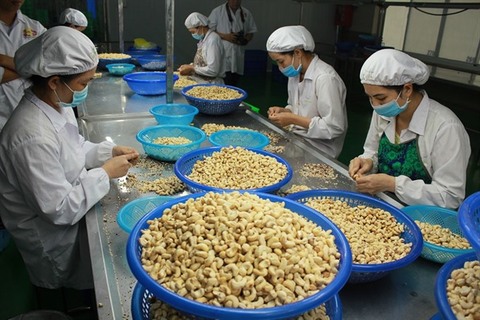Changes a must to meet energy goals
Changes a must to meet energy goals
With its great potential for renewable energy development, Vietnam will be able to lure tens of billions of US dollars into such projects and ultimately meet its energy efficiency targets once it advances energy and electricity price adjustments, along with many other solutions.
A few weeks ago, the United Nations Development Programme (UNDP) released a report titled “Private funding opportunities for renewable energy and energy efficiency investments in Vietnam.”
The report stated that Vietnam will need about $23.7 billion for renewable energy (RE) under the current Power Development Plan VII, and $1.5-3.6 billion for energy efficiency (EE). This $23.7 billion will include $7.75 billion in equity and $15.95 billion in project debt (see Table).
At least $10 billion of external capital is believed to be available now to support Vietnam’s transition to cleaner energy and energy saving. The figure was obtained from interviews with 13 banks, institutions, and investors under a survey.
The survey’s input data came from Asia Climate Partners, the Asian Development Bank, Climate Fund Managers, Clean Energy Investment Accelerator, Dragon Capital Group, the Embassy of Luxembourg in Bangkok, the European Investment Bank, Export-Import Bank of Korea, FMO/SBI Ven Capital, Glennmont Partners, the International Finance Corporation, Japan International Co-operation Agency, KfW, Mitsubishi UFG Financial Group, Saigon Asset Management, Société Générale, Susi Partners, Triodos Investment Management, and the World Bank.
“This investment is possible if the current barriers constraining such investments are addressed, especially the low price of electricity that lowers the incentives for efficient use and the existing format of power purchase agreements that deter investors from investing in the country,” said the report.
“As Vietnam is strategically reforming its business sector with the establishing of a ‘super committee’ for managing capital at 19 key state-owned enterprises, with a total capital of $130 billion, the creation of a fair and transparent environment and market is within reach. The priority should be the transformation of the energy sector to a transparent and competitive energy market,” said Caitlin Weisen, UNDP country director in Vietnam.
Great potential
Vietnam is endowed with exploitable RE resources and could deploy 85,000 megawatt (MW) of solar photovoltaic (PV) generation capacity and a large portion of an estimated 21,000MW onshore and near-shore wind energy generation potential in short order, subject to requisite facilitation, and to resulting investor comfort, according to the report.
Likewise, biomass-based power plants attached to sugar mills and hydropower projects could be revitalised through appropriate price and non-price policy signals.
Vietnam has a large potential for saving on electricity of up to 7 per cent relative to the business-as-usual, through to year 2035, with the manufacturing sector offering the largest potential for such savings. The technical energy saving potential of some of the industry sectors, such as cement production, is estimated at 40 per cent of present day consumption per unit of output.
Expanding the RE capacity and enhancing EE will help improve Vietnam’s energy independence, lesser expenditures on fossil fuel purchase, and reduce environmental pollution.
The current Power Development Plan VII (PDP VII, revised 2016) targets the addition of about 24,500MW of (non-large hydro) RE capacity, broken down into solar PV (12,000MW), wind energy (6,000MW), biomass power (2,000MW), and small hydro (est. 4,500MW) through to 2030.
Removal of barriers needed
The UNDP cited the above-mentioned 13 large banks and investors as stressing that if Vietnam wants to successfully attract $10 billion into RE and EE projects, investment barriers must be eased. For example, it is recommended that the government advance energy and electricity price adjustments, among other several obstructions.
According to investors, the gradual adjustment of electricity price that would reflect the total costs of production, including environmental externalities, is essential for overcoming one of the main obstacles for investment into efficient use of energy in Vietnam.
Low energy prices do not provide financial incentives due to long payback periods.
At the very least, it would be useful to adopt a roadmap that would indicate the expected medium-term evolution of end-user energy prices in the country and provide requisite signals to institutions evaluating the returns on potential EE investments.
In 2017, the Vietnamese government issued Decree No.11/2017/QD-TTg on mechanisms for encouraging the development of solar power in the country, offering a feed-in-tariff (FiT) for utility solar power plants of 9.35 US cents per kilowatt-hour (kWh) for a period of 20 years.
The FiT will be applicable for projects beginning operations before June 30, 2019, except for ones in the south-central province of Ninh Thuan, which have a 2020 deadline. Once the commercial operation date deadline expires, new FIT rates will be finalised.
Currently, the FiT for wind power is set by the government from November 1, 2018 at 8.5 US cent for onshore projects and 9.8 US cents for offshore projects.
However, a FiT of 15 cents per kWh is proposed by the UNDP for mainland solar power plants, which should be paid over the 20-year lifetime of the investment project. An even lower initial FiT may not attract any investor and therefore the solar PV power market would not be able to develop.
Meanwhile, power plants on islands, with 25 per cent more investment cost per kWh installed capacity, would require a FiT of 19 cents per kWh for a 20-year period.
The Ministry of Industry and Trade has approved over 70 new solar power projects to be put into operation before June 2019, with the total designed capacity of over 3,000MW. This amount far exceeds the estimated solar power output of 1,000MW by 2020 in the original Power Development Plan VII.
Major investors in the solar power industry in Vietnam include German ASEAN Power, B.Grimm Power Public Co., Ltd., Trina Solar, Siemens, Schletter Group, JA Solar, Sunseap International, Nippon Sheet Glass, Ecoprogetti, Tata Power, Shapoorji Pallonji Infrastructure Capital, Gulf Energy Development, InfraCo Asia Development, and ACWA Power.
Nguy Thi Khanh, executive director of the Hanoi-based Vietnamese non-for-profit Green Innovation and Development Centre, told VIR that whereas most of the past investments in the Vietnamese energy sector have been publicly financed, future investments into renewables will attract private investors from different scales.
“Insurance companies and public equities are interested in financing large-scale wind and solar projects under sufficient legal framework conditions, whereas households might invest in small-scale generation capacity,” she said.
“Both, company and household investment, would open new financing sources and right away reduce the public investment needs. As a side effect, the competition would increase leading to lower prices for future renewable investments when managed right,” she added.



















